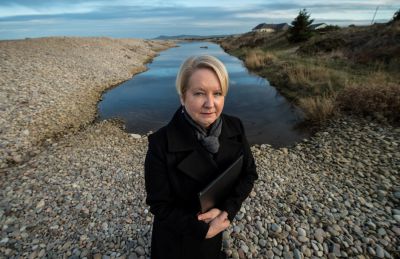On the final day of the P&J’s week-long series on challenges and trends in the local funeral sector, Calum Ross finds that many families are moving away from traditional ceremonies.
Humanist celebrants have reported a surge in the number of families asking them to conduct funeral services in the north and north-east.
 The “rising trend” of non-religious ceremonies has also been accompanied by more grieving families asking for music to be played and for mourners to wear colourful clothing.
The “rising trend” of non-religious ceremonies has also been accompanied by more grieving families asking for music to be played and for mourners to wear colourful clothing.
The number of humanist weddings overtook the number carried out by the Church of Scotland in 2017 and, while official statistics are not recorded for funerals, local celebrants reported a similar growth.
>> Keep up to date with the latest news with The P&J newsletter
Janet Donnelly, who is based at Kingston on Spey in Moray, said: “It has hugely increased year-on-year since I became a celebrant in 2009.
“Last year was the busiest year I’ve had for funerals and that takes into account that there are more of us doing it.
“We do sometimes struggle to keep up with demand, and we are conscious that this is a rising trend.
“I don’t think it is necessarily that people are becoming less religious but that people are less willing to go down the religious route if that isn’t a big part of their life.
“In the past it was what everybody did. Now there are more options and people are understanding that the religious aspect isn’t something that needs to be emphasised.”
Ms Donnelly said that she carried out about 102 funerals last year, an average of two every week, although some periods were busier than others.
“I think families are much more open now about making it a very personal ceremony whether it is the music they choose or having it at a different venue,” she said.
“People are tending to reject the traditional customs in favour of something much more relevant to the family.”
Halde Pottinger, a humanist celebrant from the Cawdor area, had also witnessed the increase in demand.
“It is very much so on the rise in the Highland area. The younger generation are making their own choices,” he said.
Karen Farquhar, a humanist celebrant who reported that the rise was also evident in Aberdeen, said she was arranging an event called “Dying Matters” at the city’s Hilton Treetops hotel on August 17, which aims to encourage more discussion about funeral plans.
“I want to get the public in and get them speaking about death. I’m trying to lift the taboo,” she said.
“One of the things I’ve really become aware of in this role is that I meet families and because they have been afraid to discuss the issue they don’t know what their loved one would have wanted.”
She added: “You maybe get two years to plan a wedding, but the same amount of planning and work goes into a funeral, but you are lucky to get four or five days.”
